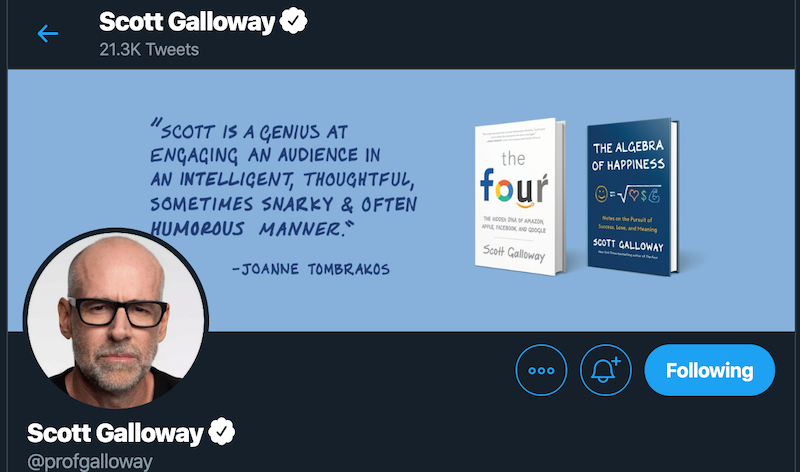Prof Scott Galloway is a clinical professor of marketing at the New York University Stern School of business. He’s also a public speaker, author and entrepreneur.
That’s a pretty clear and functional description of what a brand is and almost seems like a stark contrast of how Neumeier defines it, which is ‘a gut feeling towards a company, product etc’.
Going along with Prof G’s definition of a brand, he says that there are 3 basic ways of building a brand, and he illustrates this in the shape of a funnel.
They are: Pre-purchase, purchase and post-purchase.
What’s pre purchase?
Advertisements, Public Relations, anything you would consider as top of funnel brand awareness activities. So I would roll content marketing, lead gen, sponsorships etc into this as well.
What’s Purchase?
What happens when you are looking to buy the product — you would’ve engaged with the brand’s touchpoints. There’s conversations, interactions, distributions and things of that nature.
What’s Post-purchase?
This is what happens after you’ve got a customer. How is he treated? What makes him come back? We are looking at things like loyalty, rewards, customers service, over delivering value.
Pre-purchase
Pre purchase is in decline. Everyone hates ads. Generally, people hate to be sold to. They love to buy… but hate to be sold to. Unless you can find the sweet spot of the mysterious digital advertising world, or traditional media for that matter, ads don’t seem to work as well these days.
Or you can say that competition is really tough which makes ad spend more expensive if you want to make a dent using this channel. If you really want to reach the savvy audience, and these are people who grew up in the world of new media… you’ll need to rethink the brand experience.
Purchase
Prof G suggests to boldly shift your spending AND human capital to Purchase — and he means STORES. While everything is digital these days, the retail experience still accounts for something. This is because while digital allows people to experience a plethora of feelings and emotions, nothing beats a tactile and tangible experience of being in an environment that’s carefully crafted and branded to give the user the ideal brand experience.
This is why the late Steve Jobs made the bold move of investing heavily into stores. Apple stores are quite literally, legendary. On this point, I would add that this notion extends to digital stores as well. I’m talking about e-commerce. Templates are easy to install, but a carefully planned e-commerce experience that is UX based and goes beyond a baseline experience is priceless and will create brand loyalty like no other.
Post-purchase
Next up — Post Purchase. The crazier move would be to move even MORE resources from pre and purchase… to post purchase. If you did the work correctly, you would’ve collected data from the pre purchase and purchase stages. This data is gold. Use it to feed into your branding and marketing machine.
Create personas, craft user journeys and ensure every touchpoint you build is one that delights the customer. Your customer should have a memorable experience at any point along the way. Beyond using data, look into things like loyalty points, customer service and putting time and attention to things that the customer finds valuable. Make the customer feel valued and cared for.
Until this becomes the norm, and it is surely fast becoming the norm, brands stand a good chance of standing out if they look into post purchase.
Conclusion
Don’t just focus on top of funnel activities of building brand awareness all the way to nurturing the lead to the point of conversion. Go beyond. Delight the customer. Make them advocates and champions of your brand. In this age of social media, the customers’ voice is loud.

